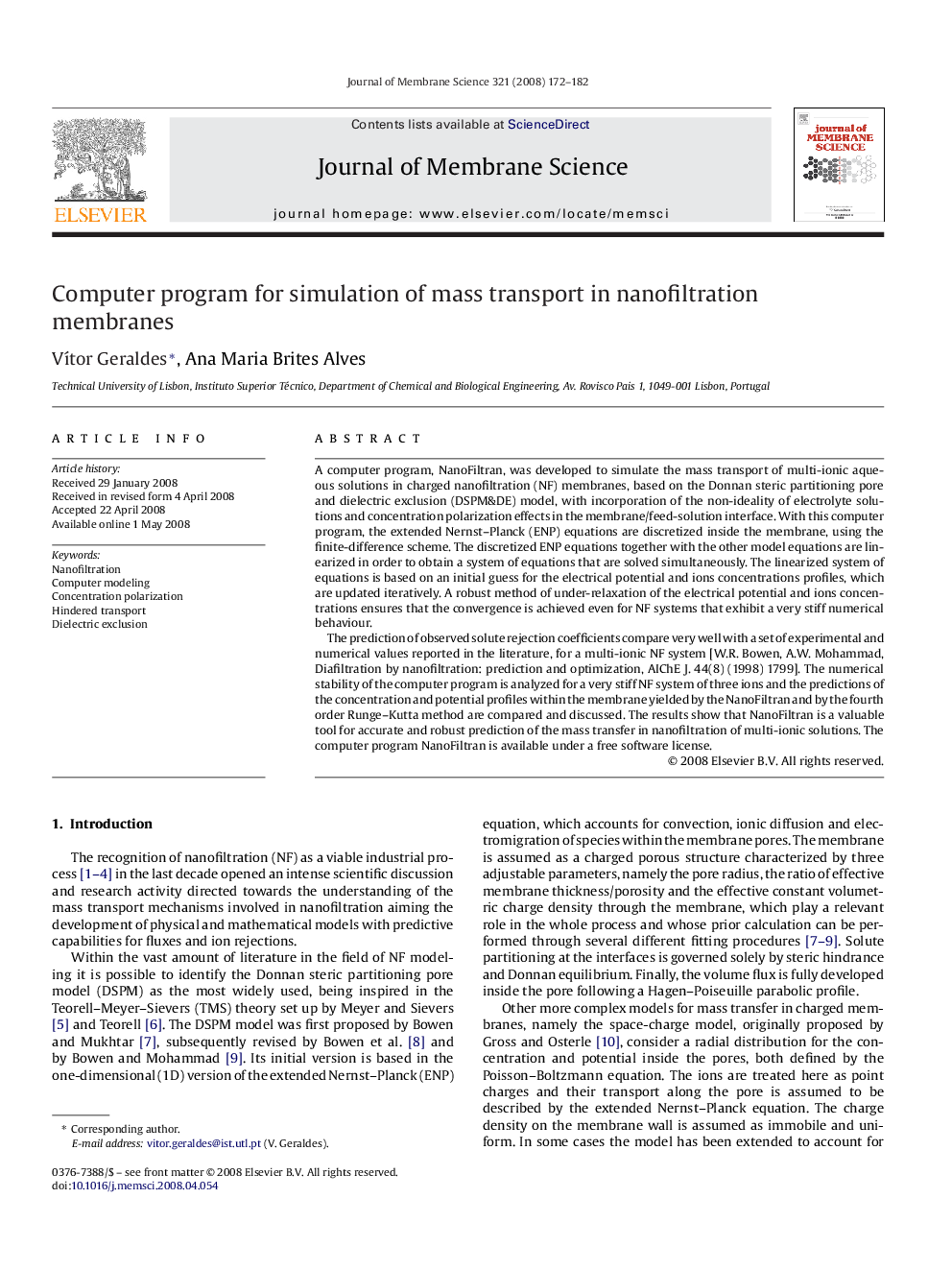| Article ID | Journal | Published Year | Pages | File Type |
|---|---|---|---|---|
| 637445 | Journal of Membrane Science | 2008 | 11 Pages |
A computer program, NanoFiltran, was developed to simulate the mass transport of multi-ionic aqueous solutions in charged nanofiltration (NF) membranes, based on the Donnan steric partitioning pore and dielectric exclusion (DSPM&DE) model, with incorporation of the non-ideality of electrolyte solutions and concentration polarization effects in the membrane/feed-solution interface. With this computer program, the extended Nernst–Planck (ENP) equations are discretized inside the membrane, using the finite-difference scheme. The discretized ENP equations together with the other model equations are linearized in order to obtain a system of equations that are solved simultaneously. The linearized system of equations is based on an initial guess for the electrical potential and ions concentrations profiles, which are updated iteratively. A robust method of under-relaxation of the electrical potential and ions concentrations ensures that the convergence is achieved even for NF systems that exhibit a very stiff numerical behaviour.The prediction of observed solute rejection coefficients compare very well with a set of experimental and numerical values reported in the literature, for a multi-ionic NF system [W.R. Bowen, A.W. Mohammad, Diafiltration by nanofiltration: prediction and optimization, AIChE J. 44(8) (1998) 1799]. The numerical stability of the computer program is analyzed for a very stiff NF system of three ions and the predictions of the concentration and potential profiles within the membrane yielded by the NanoFiltran and by the fourth order Runge–Kutta method are compared and discussed. The results show that NanoFiltran is a valuable tool for accurate and robust prediction of the mass transfer in nanofiltration of multi-ionic solutions. The computer program NanoFiltran is available under a free software license.
